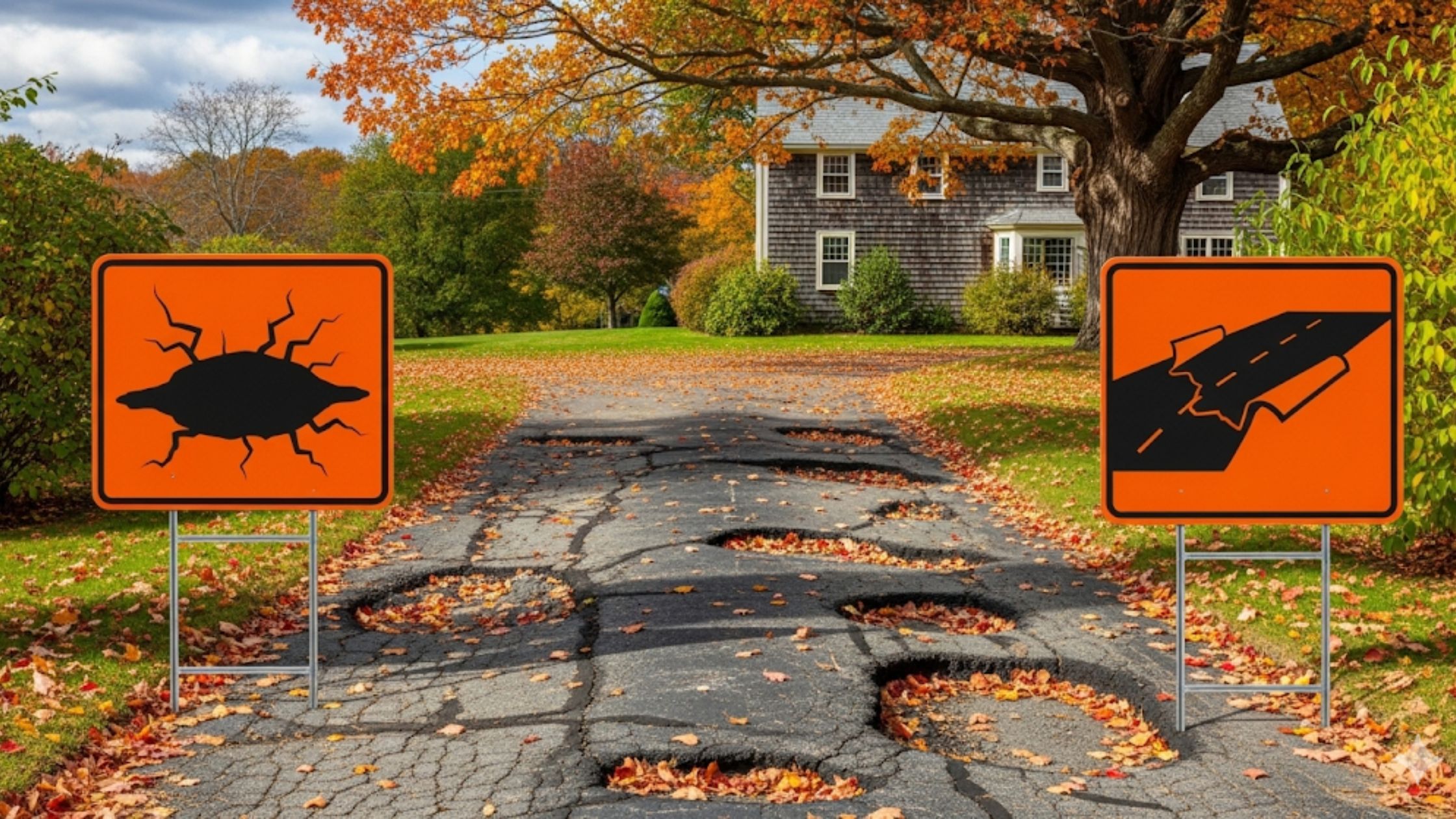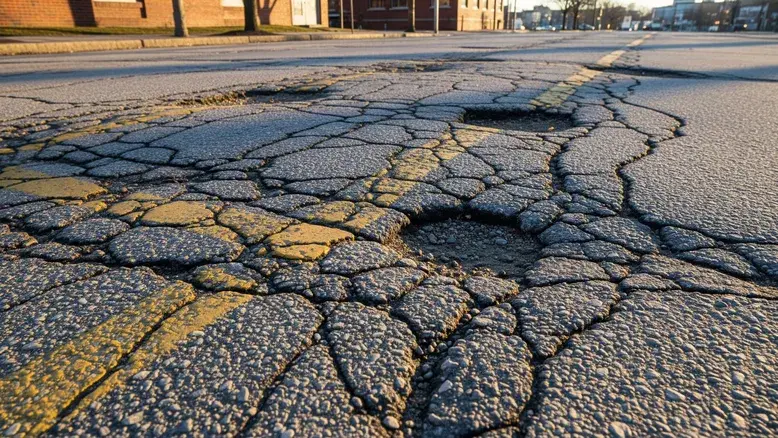Homeowners in Massachusetts often face unsightly cracks in driveways, patios, and foundations. Deciding between tackling repairs yourself or hiring experts can feel overwhelming. This guide breaks down both options—DIY crack repair versus professional asphalt sealing—so property owners can choose the approach that best suits their needs.
Understanding Concrete Cracks
Cracks in concrete and asphalt surfaces stem from a variety of causes. Moisture infiltration, thermal expansion, soil settlement, and freeze-thaw cycles all play a role. Left unattended, even hairline fractures can widen, leading to more extensive damage and costly repairs.
Massachusetts’s cold winters and warm summers accelerate concrete distress. When water seeps into tiny fissures and freezes, it expands and forces cracks to grow. Similarly, summer heat causes slabs to expand, placing added stress on joints and existing damage.
Common Types of Cracks
Hairline cracks are very narrow, often less than 1/8 inch wide, and usually cosmetic in nature. They appear due to surface shrinkage or minor settlement. Flexible fillers can typically handle cracks under 1/4-inch wide, while wider gaps require backer rods or additional materials for effective filling.
Structural cracks exceed 1/4 inch in width and may indicate deeper issues, such as foundation movement or hydrostatic pressure. Expansion cracks result from temperature-driven slab movement and often require routing to provide a uniform seal.
Concrete distress can be categorized by severity:
- Minor surface cracks under 1/4 inch
- Moderate cracks between 1/4 and 1/2 inch
- Severe cracks over 1/2 inch requiring professional assessment
DIY Crack Repair
Many homeowners appreciate the cost savings and satisfaction of a weekend repair project. DIY crack repair kits are readily available at home improvement stores, making minor fixes within reach for a typical property owner.
Essential tools include a wire brush for cleaning, a caulking gun or pour pot, and the appropriate sealant—hot-pour rubberized asphalt or cold-pour concrete filler. Proper surface preparation ensures the repair material bonds and lasts.
A typical step-by-step process involves cleaning out debris, drying the crack, heating or preparing the filler, applying it flush with the surface, and allowing adequate curing time. The full crack filling process—cleaning, heating, filling, and smoothing—forms the foundation of effective repair.
DIY crack repair offers immediate relief and budget-friendly results. Kits start under $20 and can handle dozens of hairline fissures in a single session. For minor, non-structural cracks, the payoff is quick and tangible.
However, DIY projects demand careful attention to detail. Inadequate surface prep or incorrect product choice can lead to poor adhesion, repeated failures, and frustrated homeowners.
Professional Asphalt Sealing and Crack Filling
Professional services bring specialized equipment, industry-grade materials, and years of field experience. Contractors assess the root cause of cracking, recommend the best remedy, and guarantee workmanship.
Experts employ hot-pour sealants, epoxy injections, polyurethane foams, and routing equipment for concrete crack filler services in Massachusetts. They route cracks to a uniform width, insert backer rods if needed, and pack sealant to form a lasting bond. This multilayer approach outperforms simple surface patches.
Hiring a professional offers peace of mind. Workmanship warranties can cover up to 5 years or more, addressing climate-related stresses and normal wear. Skilled crews also navigate permits and common building code requirements.
Common Professional Techniques
Epoxy injection fills deep fissures by injecting a resin under pressure, penetrating hairline cracks and bonding slab edges. Polyurethane foam injections expand within voids, sealing leaks and accommodating slab movement.
Crack routing enlarges narrow fissures to a standardized gallery, ensuring uniform sealant adhesion. Backer rods control sealant depth, preventing three-sided adhesion and allowing sealant to flex with slab movement.
Choosing the Right Crack Filling Material
Pros select materials based on crack width, expected movement, traffic load, and environmental conditions. For instance, rubberized asphalt excels in freeze-thaw zones, while epoxy injection is often the best choice for structural repairs and heavy-load driveways, making it essential to choose the right crack filling material.
DIY vs. Professional: A Detailed Comparison
Cost remains the biggest factor. DIY kits cost $0.50–$1 per linear foot, whereas professional services range from $2 to $5 per linear foot, depending on crack severity and area size.
Time investment differs significantly. A homeowner might spend an entire weekend cleaning, filling, and monitoring curing of multiple cracks. Professionals complete large areas in a day, minimizing downtime and ensuring rapid return to use.
Material performance also varies. Shop-grade fillers may weather poorly under traffic and UV exposure. Industrial-grade sealants conform to ASTM standards, offering better adhesion, flexibility, and longevity—often lasting 3–5 years or more.The Essential Guide to Asphalt Crack Filling in Massachusetts.
Homeowners should weigh budget constraints against long-term durability. Small hairline cracks can be DIY, but frequent repairs add up. A professional job typically outlasts DIY by a factor of two, reducing the need for repeat work.
Severe or structural cracks near foundations, high-traffic entryways, or garage floors call for expert evaluation. Massachusetts’s seasonal freeze-thaw cycles amplify minor defects into major failures if improperly repaired.
Selecting the Best Option for Your Massachusetts Property
Assess crack severity carefully. Hairline fissures under 1/4 inch wide are ideal for DIY fillers. Cracks exceeding 1/4 inch in high-traffic areas often merit a professional approach.
Foundation walls, bulkheads, and basement floors present moisture risks and structural concerns. Only trained contractors should handle injections or heavy grouting in these contexts to prevent leaks and maintain structural integrity.
Budget and warranty considerations also guide choices. DIY patch kits are cheap but carry no guarantee. Professional services demand a higher upfront cost but often include 1–5-year warranties covering material failure and workmanship issues.
Seasonal timing matters. Scheduling crack filling in spring or fall, when temperatures range from 40°F to 80°F, ensures proper sealant flow and curing. Avoid extreme heat or cold for best adhesion and flexibility.
Conclusion
DIY crack repair suits minor, cosmetic cracks and offers homeowners a low-cost solution. Professional asphalt sealing and crack filling deliver superior durability, warranties, and deep structural fixes. By evaluating crack severity, traffic load, and budget, Massachusetts property owners can choose the method that protects their investment and keeps surfaces safe.
Trust The SealCoating Guys to provide expert guidance and quality service for every crack filling need.
Frequently Asked Questions
How effective is DIY crack repair for minor concrete cracks?
DIY kits perform well on hairline cracks under 1/4 inch wide. They prevent moisture entry and delay crack growth but may lack long-term adhesion under heavy traffic.
When should a Massachusetts property owner hire a professional crack filling service?
Hire experts for cracks wider than 1/4 inch, structural damage, high-traffic driveways, and foundation walls. Professionals offer deeper injection, routing, and durable sealants with warranties.
What factors affect the longevity of crack filling in asphalt and concrete?
Material quality, surface prep, crack width, traffic load, and climate cycles all influence durability. Proper cleaning, routing, and use of industry-grade sealants extend repair life by years.
How much does professional asphalt sealing cost in Massachusetts?
Professional crack filling typically ranges from $2 to $5 per linear foot, depending on crack severity, site access, and required prep work. Bulk area sealing may reduce per-foot costs.
Can DIY cold-pour sealants be used for professional crack filling on Massachusetts properties?
Cold-pour sealants suit small, low-traffic cracks temporarily but lack the flexibility and adhesion of hot-pour, epoxy, or polyurethane products used by pros. For optimal results, professional materials are recommended.






.webp)

.svg)



